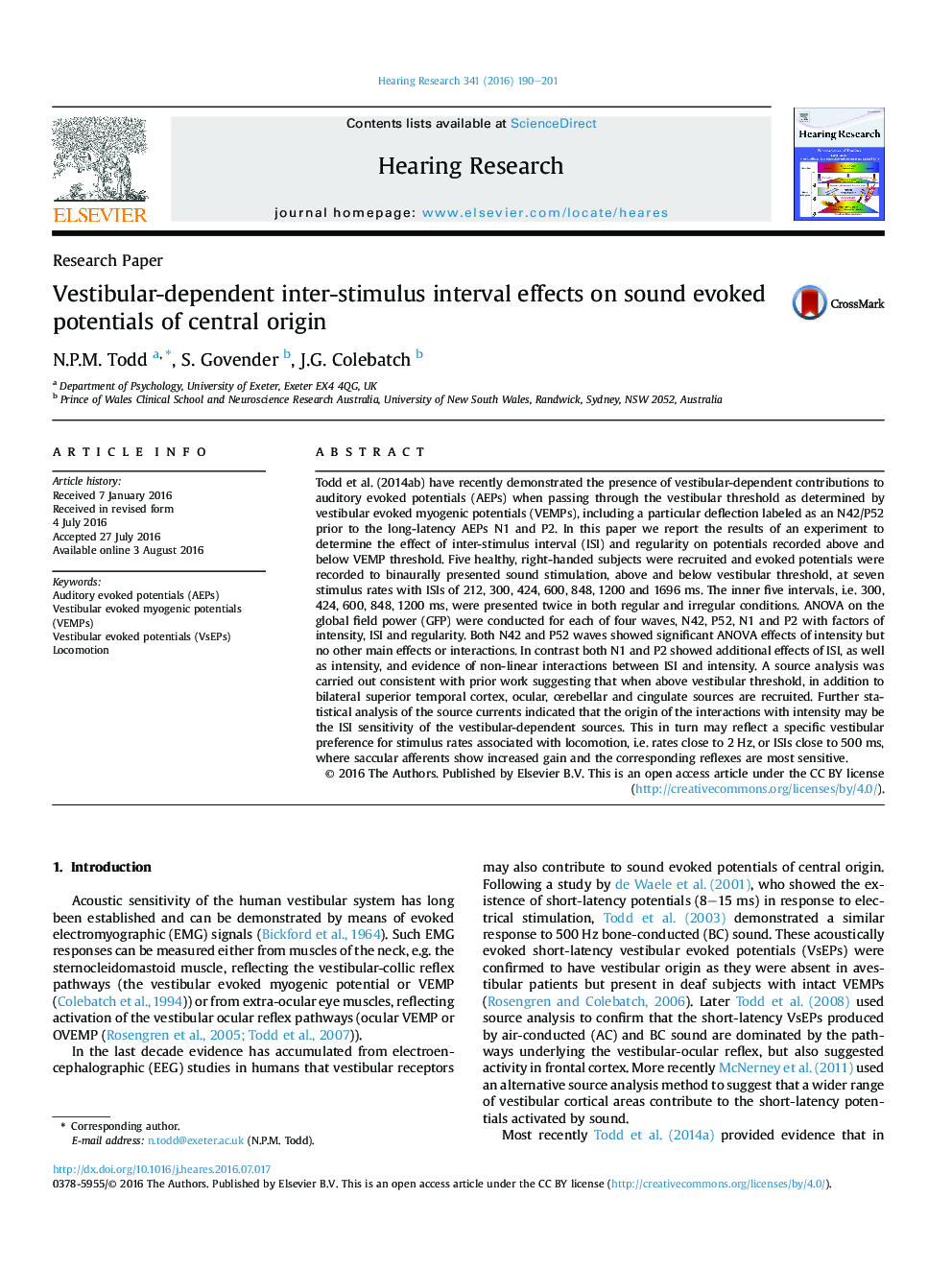| کد مقاله | کد نشریه | سال انتشار | مقاله انگلیسی | نسخه تمام متن |
|---|---|---|---|---|
| 6286879 | 1615559 | 2016 | 12 صفحه PDF | دانلود رایگان |
عنوان انگلیسی مقاله ISI
Vestibular-dependent inter-stimulus interval effects on sound evoked potentials of central origin
ترجمه فارسی عنوان
اثرات فاصله بین محرک وابسته به وستیبولار بر پتانسیل های ناشی از صدا از مبدا مرکزی
دانلود مقاله + سفارش ترجمه
دانلود مقاله ISI انگلیسی
رایگان برای ایرانیان
موضوعات مرتبط
علوم زیستی و بیوفناوری
علم عصب شناسی
سیستم های حسی
چکیده انگلیسی
Todd et al. (2014ab) have recently demonstrated the presence of vestibular-dependent contributions to auditory evoked potentials (AEPs) when passing through the vestibular threshold as determined by vestibular evoked myogenic potentials (VEMPs), including a particular deflection labeled as an N42/P52 prior to the long-latency AEPs N1 and P2. In this paper we report the results of an experiment to determine the effect of inter-stimulus interval (ISI) and regularity on potentials recorded above and below VEMP threshold. Five healthy, right-handed subjects were recruited and evoked potentials were recorded to binaurally presented sound stimulation, above and below vestibular threshold, at seven stimulus rates with ISIs of 212, 300, 424, 600, 848, 1200 and 1696 ms. The inner five intervals, i.e. 300, 424, 600, 848, 1200 ms, were presented twice in both regular and irregular conditions. ANOVA on the global field power (GFP) were conducted for each of four waves, N42, P52, N1 and P2 with factors of intensity, ISI and regularity. Both N42 and P52 waves showed significant ANOVA effects of intensity but no other main effects or interactions. In contrast both N1 and P2 showed additional effects of ISI, as well as intensity, and evidence of non-linear interactions between ISI and intensity. A source analysis was carried out consistent with prior work suggesting that when above vestibular threshold, in addition to bilateral superior temporal cortex, ocular, cerebellar and cingulate sources are recruited. Further statistical analysis of the source currents indicated that the origin of the interactions with intensity may be the ISI sensitivity of the vestibular-dependent sources. This in turn may reflect a specific vestibular preference for stimulus rates associated with locomotion, i.e. rates close to 2 Hz, or ISIs close to 500 ms, where saccular afferents show increased gain and the corresponding reflexes are most sensitive.
ناشر
Database: Elsevier - ScienceDirect (ساینس دایرکت)
Journal: Hearing Research - Volume 341, November 2016, Pages 190-201
Journal: Hearing Research - Volume 341, November 2016, Pages 190-201
نویسندگان
N.P.M. Todd, S. Govender, J.G. Colebatch,
